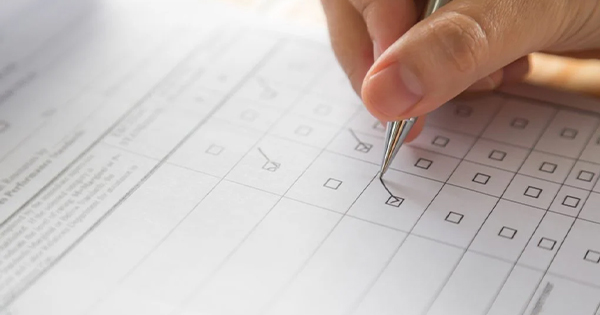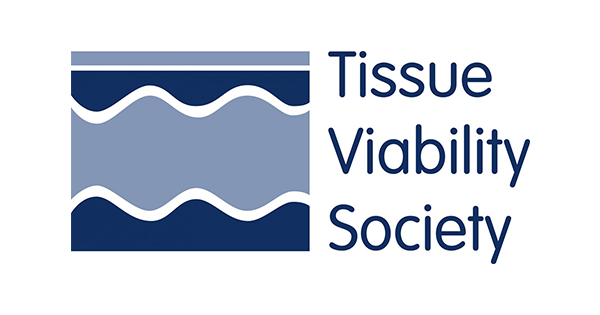Renowned physician, Gabor Maté, draws attention to the current medical paradigm, which ‘reduces complex events to their biology’. This paradigm, he goes on to say, ‘separates mind from body, concerning itself almost exclusively with one or the other without appreciating their essential unity.’ (Maté, 2022). It is this artificial separation of mind and body that has, among other things, caused me harm. Throughout my journey, as I will share, I have often felt stripped of agency, my own voice unheard, symptoms unseen and my healing barred by what often felt like a dysfunctional system. The same system is now under so much pressure that NHS staff are encouraged to “scale back on ‘established rules to care for people’ if necessary to keep the health service going” (Merrick, 2022).
Following radio ablation and vein stripping surgery on both legs, I received no follow-up care and was not advised to wear compression hosiery on an ongoing basis, something that I had no idea was in fact important. Crucially, I believe it was this oversight that, some years later, would lead to an exacerbation of symptoms and, eventually, a diagnosis of chronic venous insufficiency and, later, secondary lymphoedema.
Some ten years after my last surgical intervention I was, again, referred to a vascular surgeon who, without making eye contact, quizzed me on the dates and locations of my various interventions over a twenty-year period and made me feel like a fraud when I froze and couldn’t answer his questions under duress. I broke down and walked out in tears and, on the advice of a compassionate nurse, I filed a patient advice and liaison service (PALs) complaint. I remember sitting in the PALs office at the hospital sobbing uncontrollably, sharing my hopelessness at feeling unseen and unheard by the people who I wanted to care, the people who seemed to hold all the power.
Following the complaint, I was referred to a different specialist who simply asked why I had been referred to him. “You no longer have varicose veins, so there’s nothing I can do”, he said, and so he sent me on my way. I returned to my GP practice several times after that experience, presenting with a range of lower limb issues that were impacting my daily life.
Flash forward several years, as I lay on a bed in my GP practice, a nurse repeatedly tries, and fails, to administer a very painful Doppler assessment. What was described as a “little discomfort” felt so much more as the cuffs cut into my sensitive swollen legs. After two unsuccessful attempts, the nurse told me to rebook an appointment for another time. She didn’t know why she couldn’t get a reading as “there’s nothing wrong with the machine”. I dutifully turned up to another appointment and the same thing happened again. Another failed attempt later and the nurse asked me to come back at a later date for a manual assessment that “takes longer” and “requires two nurses to administer”.
Weeks later, I returned for my appointment and there were two nurses present who tried the same Doppler machine, rather than performing a manual assessment, despite the fact that this was recommended at my previous appointment.
Again, I was told that there wasn’t enough time to undertake a manual assessment and that I would need to come back for yet another appointment. The cycle continued. I was told that without a successful scan, compression hosiery could not be issued, but that I should try “ordering some flight socks online”.
I never did get a positive Doppler result from my GP practice. In the meantime, I developed venous eczema on both legs, which frequently became infected, and the swelling and pain worsened with time. My mobility and mental health suffered as a result, and yet still, no one had mentioned Lymphoedema to me at the time. I fell between the gaps.
At a complete loss, I embarked on my own research – I started googling symptoms, sifting through medical papers, and looking at photographs for comparison. Thankfully, I came across the Legs Matter (LM) website and bingo! I could recognise my symptoms and realised that there was hope for treatment. As a result of the information on lymphoedema on the Legs Matter website, I wrote to my GP practice in 2021 and requested that I be referred to the local Lymphoedema Unit. With no further physical assessment, I was referred and then diagnosed.
It felt wonderful to finally be recognised after all these years. Instead of having to endure the painful process of the compressing cuff around my lower legs, the assessment at the Lymphoedema Unit involved a painless process of seeking out the pulse in my large toe. Unfortunately, the specialist nurses at the unit were unable to prescribe the made-to-measure hosiery that I needed and the prescribing process is based on a series of measurements being recorded by hand on paper before being scanned and sent to across GP. This has resulted in significant delays (between 3–5 months) in getting my hands (or legs!) on my stockings. On two occasions, measurements were recorded incorrectly, the wrong prescriptions were written, and pharmacists who were unfamiliar with the ordering process misplaced my prescriptions.
Since wearing daily compression, my swelling has reduced and my venous eczema is under control. However, the picture is still far from rosy, as I have developed Pompholyx (dyshidrotic eczema) on my feet since wearing my compression stockings daily, which impacts my quality of life. This form of eczema, characterised by itchy and painful blisters, is triggered by heat and sweat, but unfortunately, I’ve been told that cotton or more breathable stockings cannot be prescribed on the NHS. Stress can also aggravate this form of eczema.
Reflecting on my mental health, I have experienced psychological trauma as a direct result of what I consider to be mistreatment over a long period of time. When I recently presented at my GP practice with stress and anxiety related to my experience of living with chronic conditions or ‘comorbidity’, my GP asked if I had been diagnosed after I told him I was living with Lymphoedema. This was the only question he asked about my physical health before running through the generalised anxiety disorder (GAD-7) questionnaire. He diagnosed me with ‘severe anxiety’ and ‘mild depression’, offering medication as an “option” but telling me at the end of the brief phone call that this is what I need to get me through this “difficult time”. He also assumed that it was shame that made me object to the medicine that, in his experience, “just works”. The pills are still sitting, unopened, in my cupboard.
Several published studies have revealed ‘that the sense of illness permanence and the chronicity of lymphoedema elicited the negative emotions of fear, anger, sadness, and loneliness, frustration as well as psychological distress of depression, hopelessness, helplessness’ (Fu et al, 2013). My story is a cautionary tale of physical and psychological trauma. I hope that, in the retelling, it rings an alarm bell somewhere and raises awareness of the importance of timely interventions and care. Sadly, my experience is not unique. The NHS spends £8.3 billion on wound management a year, which is a whopping £3,700 per person. As a Patient Partner for Legs Matter, I finally feel like I have a voice and meeting other patients has helped me to feel less alone and more, well, normal.
Although things can feel bleak, there is still hope for change. Focusing on harm, the Legs Matter coalition is working hard to advocate for change, changes that I hope will help me and millions of others who show up in the system with lower limb issues There is now an opportunity to ‘create transformation in lower-limb management that has been needed for some time’ (Atkin et al, 2021). “Making Legs Matter: A Case for System Change and Transformation in Lower-Limb Management” (2021), outlines some of the simple solutions.
Part 2: Perception of Harm
Reading through the National Reporting and Learning System (NRLS) PD09 Categories of Harm (NHS 2019), I might have been forgiven for thinking that, as a patient with chronic and intersecting health conditions that affect my lower limbs, the harm I have experienced could be simply checked off by such a checkbox approach rather than being fully understood as a complex human being with varied needs whose perception of harm is nuanced and sadly not unique.
I understand that data is required to support evidence-based interventions to improve services and manage risk, but this type of neoliberalist managerialism leaves a sour taste in my mouth because I do not see myself or the harm I have experienced in such neat categories.
My experience with harm is messy. It is both physical and psychological. The root of my experience of harm is lack. A lack of compassion, curiosity or follow-up and a lack of understanding, or, from my perspective, a lack of proactive care and vigilance.
I fall between the gaps, just as the harm I’ve experienced falls between the professional territories of the various specialists I’ve encountered over the last 20 years: the multitude of GPs, nurses, vascular surgeons, physical therapists, pharmacists and psychotherapists. In my experience with the system, rather than focusing on me as a whole person, each specialist tends to look at a discrete part of me or the specific symptom or issue that I am presenting with at the time. As a result, I found myself in a healthcare limbo for years; an in-between without a diagnosis and the care that I needed.
“Another lamentable feature of Western medical practice — not universal, but all too often seen — is a power hierarchy that casts physicians as the exalted experts and patients as the passive recipients of care. For all doctors’ dedication and goodwill, the imbalance compromises patients” agency over their own health and healing process. Essential questions about their lives go unasked, while patients in turn lack the confidence to insist that their intuitions and insights about themselves contribute to the process, much less guide it.” (Maté, 2022).
When I interact with doctors, I frequently experience what I can best describe as a kind of double jeopardy panic. I have a limited amount of time to ‘present’ my experience and summarise my years of medical interventions. Let’s also not forget having to remember key facts (e.g. dates of surgical interventions or specific diagnoses) that often elude and frustrate me in equal measure. I always wonder, can’t these details about me be sourced from my medical record? As a patient, I am expected to narrate my own experience and pain in key terms and words that will help to put me in an understandable or diagnosable box that frequently treats the mind and body as separate entities. I’m also meant to buy into the medicalised model that focuses on quick wins, compliance, and the avoidance of harm even if such ‘find and fix’ approaches tell us little about the presence of patient safety, alerting us instead to its absence’ (Lawton et al, 2014).
The many individual healthcare professionals that I’ve interacted with certainly aren’t flawed or incompetent individuals; rather, they are knowledgeable specialists operating within a flawed system and an environment that is under strain. Workforce shortages are already having a direct impact on the quality of patient care and the staff experience (Nuffield Trust, 2019) and this is widely reported in the press. There are ‘significant workforce issues in nursing,’ according to Professor Alison Leary, with a “50,000 registered nursing deficit in England” and “financial models that encourage frontline skill dilution” (Leary, 2022). All this, of course, plays out against a divisive and unstable political backdrop, in which further cuts to public services are likely. So, in a way, we are all experiencing harm the further away we move from the principles and values upon which the NHS was founded, as outlined in the Constitution (2009: updated 2021).
Within this context, it’s understandable that patient relationships of the kind I crave, are difficult to nurture and that proactive care that crosses professional territory/boundaries is an unachievable aim. However, there is always hope.
Leary refers to nursing as a “profession of vigilance” in her talk Specialist Nursing – What Does the Future Look Like? (2022), where nurses can rescue and proactively manage care for patients like myself so that they no longer fall within the gaps. Something that stood out to me in this talk was the concept of ‘justifiable deviance,’ which is a practice where nurses follow a protocol but know when to deviate from it because they have the judgement, knowledge and expertise to do so. Nurses truly have the power to “bring about significant change for patients and [their] workload.” (Hopkins, 2022).
As a patient, I love the concept of ‘justifiable deviance’, because it would create the conditions for the care that I have always required. Justifiable ‘positive’ deviance would imply that I felt safe and that the person with whom I’m interacting has my back and is willing to be bold in advocating for my care when necessary. This isn’t to say that I can’t be active or agitated as a patient, or that I don’t have agency or responsibility for my own health; rather, it means that my care could be brokered and I’d feel heard, the truth of my experience validated in all its messy complexity and boundary-crossing nuance.
Alison Hopkins MBE (Chief Executive, Accelerate) urges us to ‘Challenge the narrative, the stories you hear or the negative influences will embolden you to be an advocate for your patient and your team’. Hopkins calls for a change in the way clinicians prescribe compression ‘dosage’, shifting the onus from patients to clinicians to deliver care differently (Hopkins et al, 2022).
In 2019, the NHS Benchmarking Network published the “Positive Deviance in Intermediate Care Services” report. The report defines positive deviance as an approach that “focuses on those health care services who demonstrate exceptional (or positively deviant) performance in a particular area, despite facing the same constraints as others”. Positive deviance methodology can be applied to organisations, teams or services and is measured in terms of both clinical outcomes for the patient (as measured by a positive change in dependency levels) and patient experience (as measured by the Patient Reported Experience Measure or PREM) (2019:5).
Aneurin Bevan, the Minister of Health who was responsible for establishing the NHS, described the values of collaboration and mutualism embodied by the NHS as “bulwarks against neoliberalism” (Smith, 2018). As a patient, I believe it’s essential to have healthcare professionals who are willing to challenge the system and advocate for their patients. In a collaborative system, both patients and healthcare professional should have the freedom and courage to speak up. This raises the question of whether we would need Freedom to Speak Up Guardians in such a system (NHS England, 2023).
As a patient, I often wonder how I would redefine the NRLS PD09 categories of harm to reflect my own experiences. Although there is no easy answer, I believe that listening to patients and sharing their stories is the first step in understanding and learning how to be more compassionate and less risk-averse in practice. This way, patients would not feel like they have to be ‘good patients’ to receive the right care, even if they disagree with their treatment or do not fit into a specific category
Legs Matter comment
This has been a sobering read. I wonder what struck you the most when reading this. Have you imagined what it is like being on ‘the other side? The other side of the window and paper, looking in and reflecting on your experience; the other side of the conversation about what harm means to clinicians, knowing that this does not fit; the other side of hearing powerful words or descriptions that may jar; the other side of the system of care and knowing you are at a disadvantage or falling through the gaps.
In the Legs Matter coalition, we have three people with first-hand experience with leg ulcers or lymphoedema. These individuals bring profound reflections to the group of clinicians and the Legs Matter Campaign. They have an equal voice and can veto our suggestions! I have found that this group has taught me a lot about life on the other side; it has made me more reflective and aware of the jargon we use, as well as how when we describe some beliefs about ‘compliance’ or discussions we overhear and how much this actually hurts the people in our group.
Legs Matter is here to help bridge that gulf between the experience of healthcare workers and the people we are here to serve. But the learning starts with us. We need to understand how our healthcare system and the language we use can alienate people. We need to stop, ask questions and truly listen with openness to their answers. It is in joining together that our services, our approach and our conversation will be shaped for the better.
I’d like to pose some questions below that, while we don’t have answers to, would be interesting to consider.
- What will you take away from Kristy’s article?
- Which insight will change your practice or approach?
- How will you help empower other Kristy’s?
- How can we actively reduce ‘messy harm’, people falling through the gaps?
NHS England, Patient Safety comment
The experience described in Kristy’s case highlights several weaknesses in the systems and process in place to support safe and effective patient care. Improving patient safety is a key ambition for organisations across the NHS, locally and nationally. Nationally the NHS Patient Safety Strategy describes how it intends to support the NHS in achieving its ambition to continuously learn and improvement patient safety. This is done by work to support two key foundations: patient safety culture and a patient safety system. There are three strategic aims to support the development of both:
- Improving understanding of safety by drawing intelligence from multiple sources of patient safety information (Insight)
- Equipping patients, staff and partners with the skills and opportunities to improve patient safety throughout the whole system (Involvement)
- Designing and supporting programmes that deliver effective and sustainable change in the most important areas (Improvement).
A key programme to support more effective involvement of patients in their own care, and safety improvement at a more strategic level, is the Framework for Involving Patients in Patient Safety, published in June 2021.
The framework describes several ways in which healthcare staff can support patients to be involved on their own healthcare and safety. Opportunities include:
- Encouraging patients to ask questions by asking them directly if they have queries or concerns about their care and providing them with relevant information leaflets, videos and apps
- Individual information-sharing sessions for patients, including proactively involving them in monitoring their symptoms and making choices about their care, where appropriate. Patients and their relatives know best what is normal for them and can often pick up subtle signs of physiological deterioration before staff or monitoring systems.
- Reporting incidents by raising concerns through complaint systems and flagging them to the online national reporting system (currently the National Reporting and Learning System (NRLS) to be replaced by the Learn from Patient Safety Events (LFPSE)
Whatever the approach, there is a need to ensure that:
- Individuals have enough information to participate in decision-making about their care; information should be consistently written in plain language without jargon
- Communication is effective, which may include the use of structured communication tools, so that individuals both understand the information they are given and feel safe in communicating their needs
- If individuals feel they need more information they are directed to this
- Individuals are trained when required in how to be involved in their own safety, eg in self-medication
- Individuals are helped or trained to use technology if required
- When individuals need access to wider support networks relating to their condition or another concern, they are directed to these, including local independent advocacy services.
In addition, the framework describes the role of Patient Safety Partners (PSPs; for ease of reading, the term patient in this framework describes anyone who receives care from NHS services). PSPs are patients, carers, family members or other lay people (including NHS staff from another organisation working in a lay capacity) who are recruited to work in partnership with staff to influence and improve the governance and leadership of safety within an NHS organisation. As such, they perform a very different role from that of the traditional NHS volunteer who acts as, for example, a hospital guide or befriends and supports patients. This framework therefore combines important ways to make real what Don Berwick called for when he said that ‘patients and their carers should be present, powerful and involved at all levels of healthcare organisations from wards to the boards of trusts’ (Gov.UK, 2013).
The new Learn from Patient Safety Events (LFPSE) service brings with it a host of important changes to support better insight to improve patient safety including; some technological, terminological, practical, and philosophical. One message that was heard strongly from patients who had been affected by patient safety incidents was that the existing levels of harm classification in NRLS was inadequate. In particular, they felt that although it was originally intended to cover both physical and psychological impacts, these were rarely given equal consideration, leading to a minimisation of the mental and emotional toll these incidents can take. Therefore, in LFPSE, there are two distinct questions: one about the physical and one about the psychological harm sustained to the patient. Also highlighted in the policy guidance is that, where practicable, the patient’s perspective on these harms should be factored into the levels reported.
You can read more about the new categories for levels of harm in LFPSE, and how they should be applied, here on the FutureNHS platform which is available for all to access, but requires you to sign up for a free account].
There is also a specific field which asks ‘what was the impact on the patient and their subsequent care?’, which supports more of the narrative to be captured, alongside the quantitative data of the levels of harm scales.
Kristy notes that the harm she sustained arose from – ‘a lack of compassion and curiosity or follow-up/through, a lack of understanding or, from my perspective, a lack of proactive care and vigilance’. The definition of a patient safety incident is ‘something unexpected or unintended that could have or did lead to harm for one or more patients’, and guidance states that this can be the result of acts of commission, something happened when it should not, or of omission, something failed to happen when it should (NHS England, 2023). The omissions Kristy describes constitute patient safety incidents, with the implementation of the upgraded safety learning system, and the ongoing work to improve safety culture and awareness of how harm can occur, it is hoped that these incidents could be captured, acted upon and learnt from, either by the staff, or by patients — directly or via PALS or other advocacy —though our Patient and Public reporting form, or forthcoming LFPSE mechanisms being designed alongside patients.
Patient safety is not only about minimising the things that go wrong but also maximising things that go well, therefore the LFPSE service not only allows the capture of incidents when they have occurred, but also the recording of good care: positive experiences that the health service can learn from.





